When I first discovered Pre-Raphaelite art, I was a seventeen year old girl with a passion for stories. I was never a feel-good, only-happy-endings kind of girl. I like a story with teeth and a hint of melancholy, stories with layers to unfold and explore. Pre-Raphaelite art is filled with such tales.
Twenty-five years later, I have learned that sometimes the best stories are the subtle ones. There is an art to an understated narrative. It packs a punch, never self-consciously, but with the confidence that the storyteller doesn’t have to oversell. As readers or viewers, it is the experiences we bring to the table that help shape our perception of the work and add to its story.
I think Arthur Hughes tapped into that in a series of pictures that tell a story in a nuanced way. He does not overload us with details, yet they are there for us to find.
In the 1850s, Arthur Hughes painted April Love. I’ve blogged about it before here, when I was inspired by John Ruskin’s description of the painting, the expression on her face, and, perhaps oddly, Angela Lansbury’s performance in The Picture of Dorian Gray.
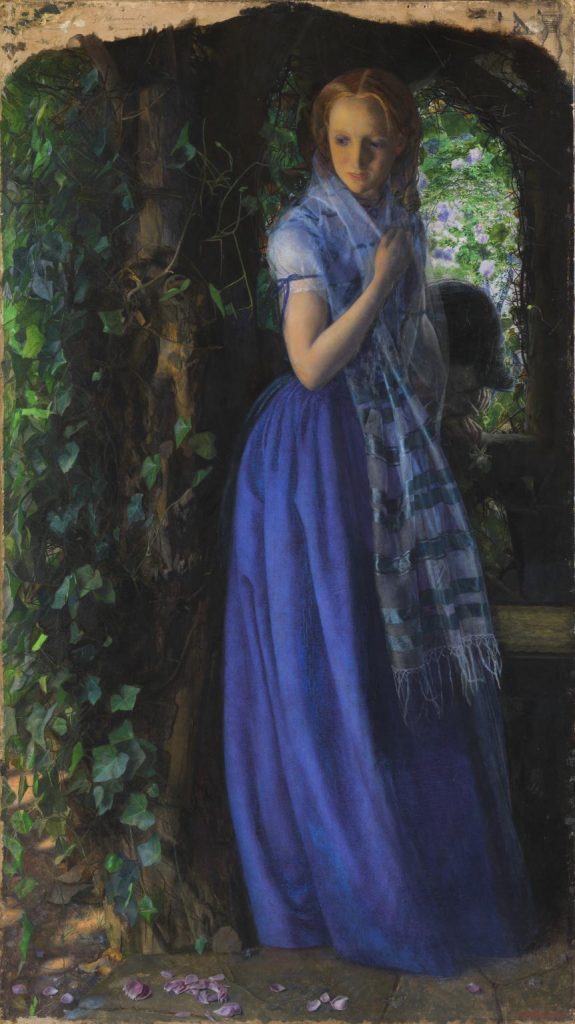
Her eyes brim with tears, we can hazily make out the hint of a lover standing behind her in shadow and it seems his head is in his hands. Flower petals strewn on the ground add a poignant touch.
William Morris jumped at the chance to purchase the painting. When it was exhibited, Hughes accompanied it with these lines from Tennyson: Eyes with idle tears are wet./Idle habit links us yet./What is love? for we forget./Ah, no! no!/
Hughes also painted Amy, which may have been a study for The Long Engagement. When we view Amy with April Love lingering in our memory, it is easy to see this as a part of the story. I do not know if this was Hughes’ intention, but it works.
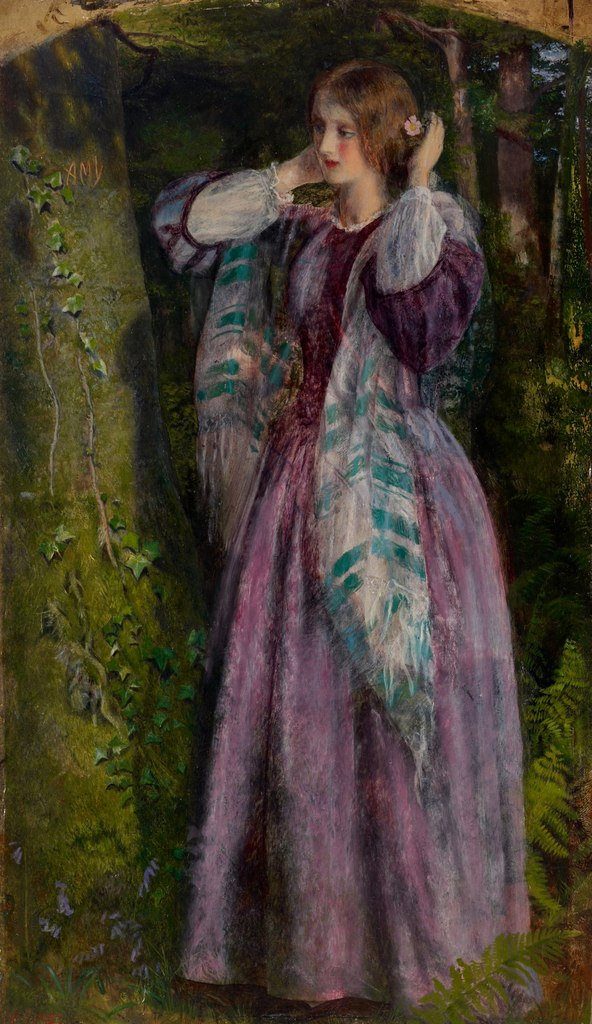
It is, of course, her name carved on the tree that grabs me. It looks as fresh as she does. Ivy grows on the tree, but it’s not abundant. It’s a plant that is usually as tenacious as it is beautiful and spreads its tendrils widely, but this ivy is in its first flushes of youth. Everything about this story screams new to me.
New love, new growth. Amy is a beginning.
In 1859, Hughes gave us the next chapter. The Long Engagement was started by Hughes in 1853, so instead of there being a linear chronology to these works, I suspect they overlap.
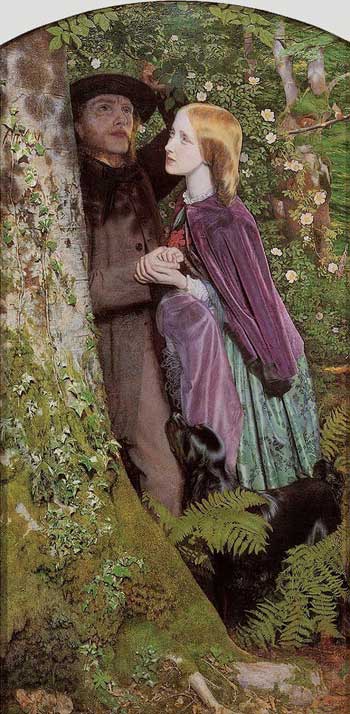
The Long Engagement was originally meant to depict a Shakespearean scene from As You Like It with Orlando in the Forest of Arden. It was later reworked by Hughes into the image we see now.
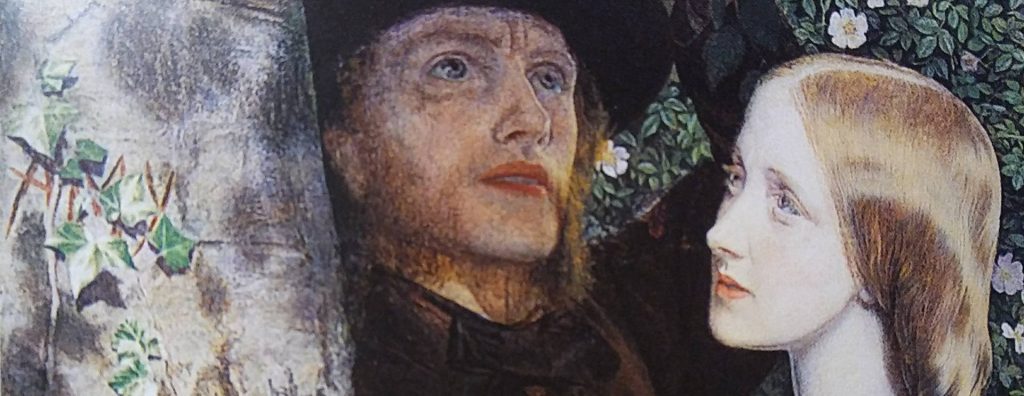
Amy’s name is still on the tree, no longer with the same crisp newness. The ivy has made its way upwards, partially obscuring the letters. There’s moss at the bottom of the tree now. We can see the passage of time here and it seems that time has not been on the side of these lovers.There is no wedding ring on her finger.
By the way, Amy was also the name of the artist’s daughter.
Even though we can sense a story of sadness with the details of the name and the ivy, I think there is still hope here. The sunlight is dazzling, even if it is only shining on her and not him. He’s not quite out of the shadows yet, but I think he’ll get there. And there’s verdant growth all around.
The flowers in the background and the green ferns are evocative to me. Things are growing, changing.
Her hands holding his, her earnest face, even the loyal dog leaning his chin on him lovingly all say “We’re not giving up.” I feel he’s in a moment of despair, but that his loves (both human and canine) are going to pull him forward into the light, where they will flourish.
At least that’s the story I see, You may see something different and I love and embrace that utterly and completely.
That’s the thrill of art.

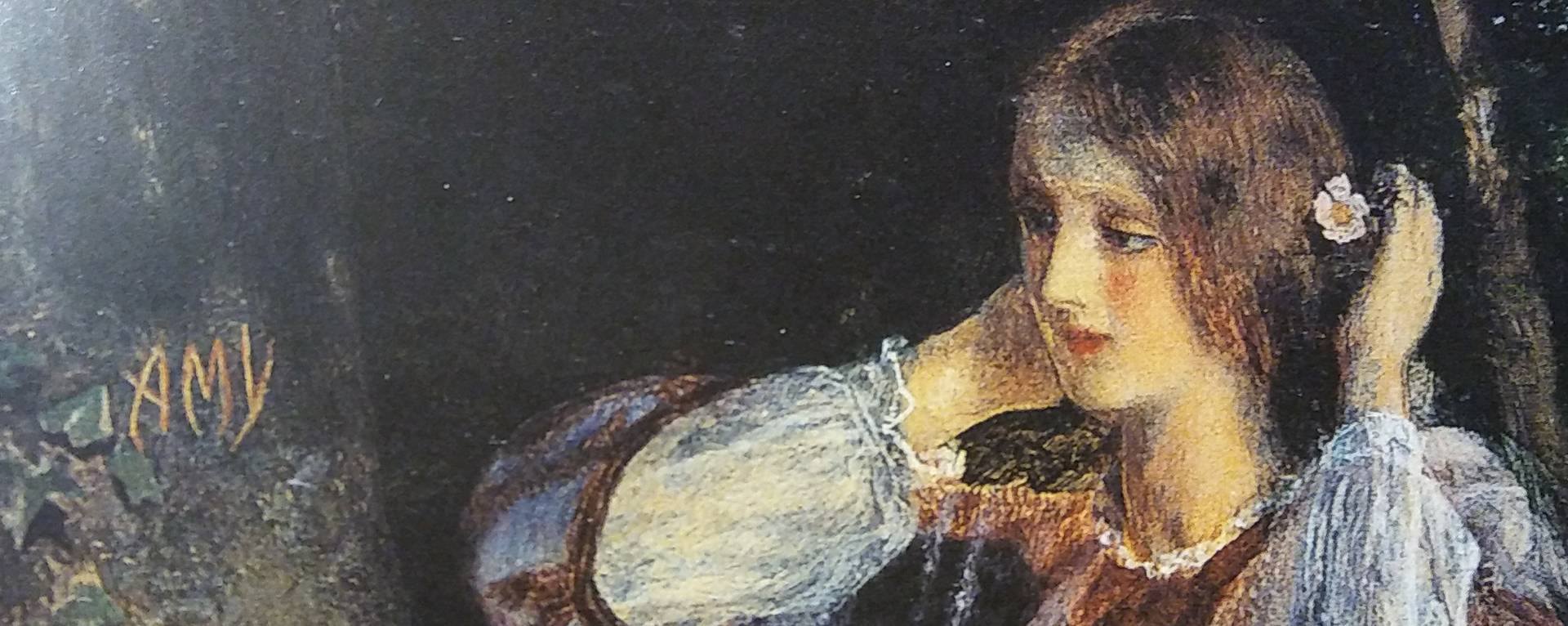
Arthur Hughes’s paintings are so beautiful – I love the vibrant rich colours. The blues and purples are exquisite. Regarding ‘Amy’ and ‘The Long Engagement’, no doubt it was money/social position that was to blame. The woman’s clothes suggest a wealthy background, so probably it was the man’s lack of money or social status which prevented the marriage. I think in Arthur Hughes’s own case, it ended happily. He married the model for ‘April Love’ and ‘Amy’, Tryphena Foord, and she is described by the Tate touchingly as ‘his one and true love’!